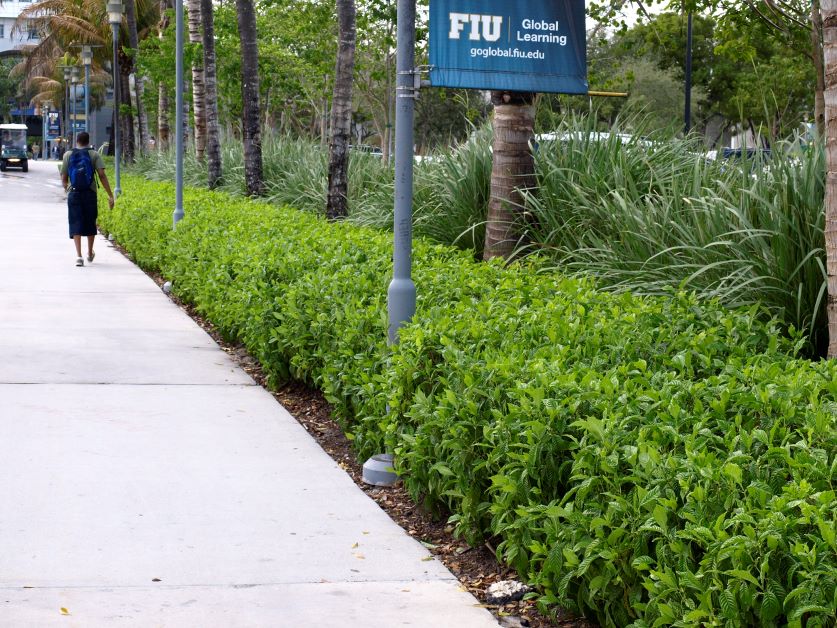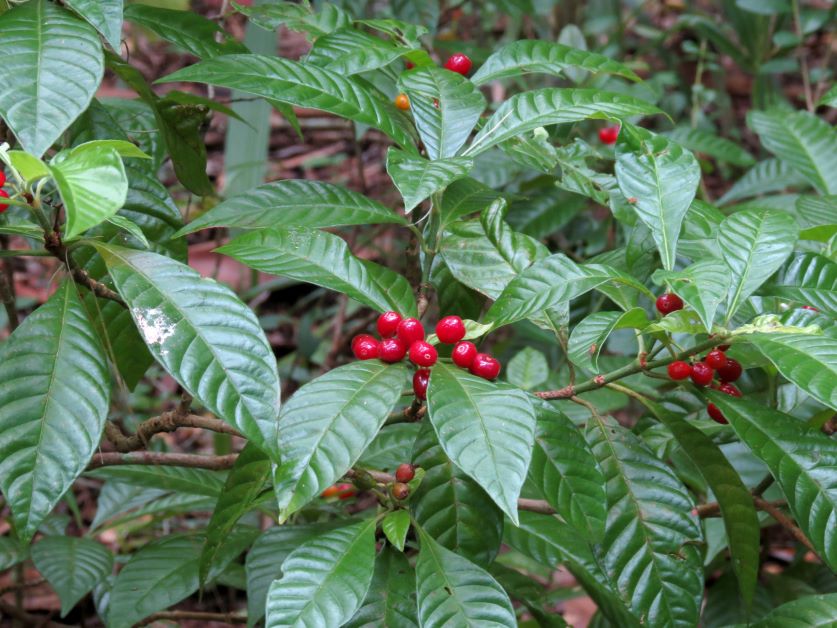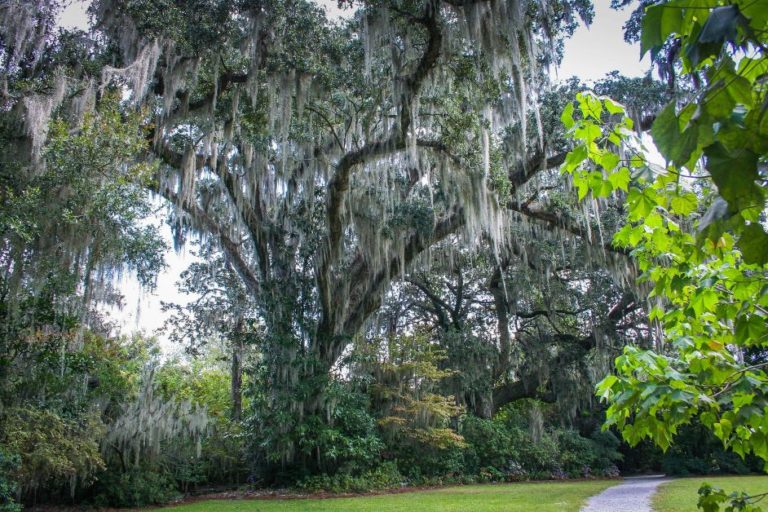Florida’s Wild Coffee Plant
Last Updated: 06/15/2022
I went to a plant festival hosted by my local UF-IFAS extension office with one goal: pick up some Florida natives – bonus points if they’re edible. Imagine my excitement when I saw a little plant for sale with the tag “Wild Coffee.” I snatched that container up, dreaming of all the home-roasted cups in my future. I admit that this was an impulse buy. I knew nothing about the wild coffee plant and what I learned during my research surprised me.
Can You Drink the Wild Coffee Plant?
I bought my Florida wild coffee plant with the intention of drinking it but unfortunately for me, wild coffee is an ornamental shrub. Although some claim that you can roast and drink wild coffee seeds, they don’t contain caffeine. In fact, many people say that a brew made from wild coffee will only leave you with a headache. Try it at your own risk, and I’m giving you no guarantees that you won’t get sick.
Lack of caffeine aside, wild coffee makes a nice addition to the Florida garden, especially for those who have a lot of shade.

What is the Wild Coffee Plant?
Wild coffee is an herbaceous shrub that’s native to Florida, the Caribbean, and Central and South America. There are more than 100 wild coffee species known to exist, but only 4 of them grow in Florida. One of the most common cultivars is the dwarf species Psychotria nervosa, also known as little psycho and Seminole balsamo.
The Latin name Psychotria nervosa translates to “giving life” (Psychotria) and sinewy (nervosa). This name describes wild coffee’s ritual and medicinal uses in certain cultures — there are reports that the leaves contain the psychoactive compound DMT.

Wild coffee has a pretty large range when it comes to height – it can grow anywhere between 3 and 10 feet tall. How tall it grows depends on how much shade it’s in. The more shade, the bigger the plant. It spreads from 1 to 8 feet.
Psychotria nervosa grows smaller at about 3 feet tall. This is because it’s a dwarf variety. Psychotria nervosa makes for an awesome understory plant since it loves shade.
A lot of people plant wild coffee because of its unique leaves. Depending on how much light they get, the leaves range from light green to dark. They’re glossy with an embossed texture.
The warmest parts of Florida will see wild coffee blooms in spring. Central and lower North Florida will have to wait until late summer or early fall. After pollination, the understated, white flowers form into clusters of red berries which contain two seeds each.
How to Grow the Wild Coffee Plant
Wild coffee will grow from seed or from cuttings. If you do plan on growing from seed, make sure to remove the outer berry before planting the seed into the ground. Wild coffee seeds also don’t last very long, so plant them quickly. Once established, wild coffee is an easy self-seeder.
Many smaller nurseries specialize in Florida natives, including Psychotria nervosa. You can use the FANN database to find a Florida native nursery near you. You can also find wild coffee plants online.

Wild Coffee Plant Growing Conditions
Light
Preferring full to part shade, wild coffee is one of the best shade plants in Florida. This is the perfect shrub for the spot in your garden that’s too dark for much else to grow. You can also grow wild coffee in full sun, but it will grow slowly and remain small.
Temperature
This is a heat-loving plant. While it does grow in the lower parts of North Florida, it thrives in Central and South Florida.
Wild coffee is hardy down to 23°F, but it’ll lose its leaves if there are frosts back to back. If this happens to your plant, don’t fear – it’ll more than likely bounce back with the arrival of spring (or summer). You should cover your wild coffee with a frost blanket if you know a heavy frost is coming.
Wild coffee grown in warmer parts of Florida will stay green throughout the year.
Water
This shrub is low-maintenance and fairly drought-tolerant. Water it if it looks like it needs watering. Keep the soil moist but not soggy.
Soil
Like most Florida natives, wild coffee doesn’t mind poor, sandy soil. The most important thing is that you pick a spot that’s well-draining. The wild coffee plant also prefers a soil pH of 6.1 to 7.5. That large range is a testament to how much this plant doesn’t really care about its soil.
Fertilizing
The wild coffee plant doesn’t need any special fertilizing. If you’d like, amend your soil 2 weeks before planting with oak leaf compost but this is optional.
Pruning a Wild Coffee Hedge

One of the best ways to use Psychotria nervosa in your landscape is to plant a wild coffee hedge. Plant several of them in a row, let them grow to your desired height, and then trim them regularly to keep their shape. Wild coffee doesn’t mind a heavy pruning, which makes them a great species for topiary, too.
What Butterflies Are Attracted to the Wild Coffee Plant?
Wild coffee draws in a wide variety of pollinators, perhaps the most important being the rare Atala butterfly (Eumaeus atala). Declared extinct in 1937, the gorgeous Atala was re-discovered in 1959 but is still endangered. They’re usually spotted in Southeastern Florida.

The Great Southern White butterfly (Ascia monuste) is also attracted to the wild coffee flower. Although this species is common, it’s a very pretty visitor to your garden.

What Birds Are Attracted to the Wild Coffee Plant?
Many species of birds love the wild coffee’s red berries. Cardinals, mockingbirds, and blue jays all flock to a wild coffee plant for its fruit. Florida’s state bird, the Northern Mockingbird, is especially fond of wild coffee.

Disclaimer: Offbeet-Gardener is reader-supported. At no additional cost to you, I earn commissions from purchases made through links in this post.
Featured Image Photo Credit: Katja Schulz






